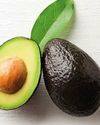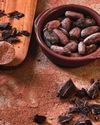The carbohydrates, including starch, occur as major constituent in all green plants. The commercial sources of starch are maize, wheat, rice, potatoes, barley and sorghum. While glycogen is the reserve carbohydrate of animals, occurring mainly in the liver, the amylose and pectin are present in green plants. In this context it would be relevant to say that alginic acids occur in marine algae and structurally are linear copolymer with homo-polymeric blocks of beta-D-mannuronic acid linked so that the carboxyl group is shielded by a glycosidic linkage (linked 1,4) and its C-5 epimer alpha-L guluronate.

In other words it is a linear polymer of mannuronic acid (M-block) and guluronic acid (G-block) in the pyranose ring form. Depending upon the degree of polymerisation, the molecular weight of alginic acids varies in the range 32,000-250,000. The monomer in the molecule may contain consecutive M-blocks or consecutive G-blocks or alternating M and G-block (MG-block).
The alginic acids are mostly extracted from brown seaweeds or kelps, chiefly from Macrocystis Pyrifera - the giant kelp on the Pacific coast - and from Laminaria Digitata - the horsetail kelp on the Atlantic coast. The technical grades of alginic acid contain some cellulose, while the refined or food grades of algin are obtained by removal of cellulose via filtration, bleaching and further purification. As far as properties of alginic acid are concerned it is white to yellow powder with remarkable hydrophilic colloidal properties, insoluble in water as well as organic solvents. It is slowly soluble in alkaline solutions.
Alginic acids have wide range applications wherever a hydrophilic colloid with marked thickening, stabilizing, emulsifying and water holding properties is needed. The specific industrial uses of alginic acid are in foods, tooth paste, cosmetics, pharmaceuticals, textiles, concrete, boiler water treatment, adhesives, fibres and oil well drilling mud. Alginic acids are extensively employed in ice creams and syrups due to their stabilising action.
Esta historia es de la edición February 2017 de Food Marketing & Technology - India.
Comience su prueba gratuita de Magzter GOLD de 7 días para acceder a miles de historias premium seleccionadas y a más de 9,000 revistas y periódicos.
Ya eres suscriptor ? Conectar
Esta historia es de la edición February 2017 de Food Marketing & Technology - India.
Comience su prueba gratuita de Magzter GOLD de 7 días para acceder a miles de historias premium seleccionadas y a más de 9,000 revistas y periódicos.
Ya eres suscriptor? Conectar

Avocados: Health Benefits And Sustainable Cultivation
ATTRACTIVE GROWTH SEGMENT - In only a few years, the avocado has developed from being a rather a and has become an integral part of modern cuisine and in restaurants throughout Europe and beyond.

UFlex to Showcase Innovative and Sustainable Printing and Packaging solutions at DRUPA 2024
U Flex Limited, India's largest multinational flexible packaging and solutions company, is participating in DRUPA 2024, the premier global trade fair for print and packaging innovations, scheduled to take place in Dusseldorf, Germany from March 28 to June 7, 2024.

Hubergroup and Manroland Goss unite for Sustainable Packaging Innovation
Hubergroup, a global specialist in and chemicals, has partnered with manroland Goss web systems, a leading provider of web offset printing solutions, in a strategic collaboration.

Technological Advancements in the Premium Flavour, Extract and Concentrate Industry
Food Marketing & Technology Magazine had the privilege of hosting the fourth edition of their business webinar on “Technological Advancements in the Premium Flavour, Extract and Concentrate Industry” with Paul Ahn, Global Sales Manager, Flavourtech.

Flavourtech's Origins: From Wine to Worldwide Flavor Solutions
LEON SKALIOTIS, CEO of Flavourtech - Discover how Flavourtech, founded over 40 years ago by an innovative winemaker in Australia, evolved from addressing grape juice desulphiting to revolutionizing flavor extraction and concentration across various industries.

How CPG Companies Can Adopt Better Sustainable Packaging Practices in 2024
Sustainability has gone mainstream. With more switching to consumers environmentally friendly brands, it's become a central theme across all industries.

The Evolution of the Protein Value Chain Sustainable Protein Systems for a Growing World
As the world's population is on course to surpass ten billion by 2050, our food systems face the challenge of providing sustainable nutrition without further harming harming the planet. Animal-based diets and the reliance on animal-derived proteins are significant contributors to environmental degradation and public health issues. Not only is the global population increasing, but the expanding middle class in developing nations is driving a surge in protein demand, intensifying the strain on our environment.

Implementing the Technological Intelligence in Agricultural Produce
It is estimated that by 2050 the I world's population will be around 10 billion. From employment generation to contribution to National Income, agriculture is important to all of us as agricultural produce is the core on which we survive. It contributes a significant portion to the economic prosperity of the developed nations and plays an active part in the economy of the developing countries as well.

Cocoa Crises: A Sweet Industry's Bitter Challenge
As a pastry chef and entrepreneur running a small-scale baking business, I have always believed in the magic of cocoa. From the velvety richness of couverture chocolate to the deep, earthy notes of cocoa powder to the creamy allure of cocoa butter, these ingredients are the essence of our creations.

Ethylene Oxide (ETO) Detection in Ready-Made Spice Mixes: Ensuring Food Safety
INTRODUCTION - In the world of culinary delights, ready-made spice mixes hold a cherished place, adding convenience and flavour to countless dishes. However, recent concerns over food safety have brought to light the presence of ethylene oxide (ETO) in some of these products.